Sera’s Blog 2013
You can now follow the latest news from Staples & Vine with Sera’s Blog.
Updates from the workbench with news on the latest aircraft being sculpted.
I hope you enjoy the blog and I appreciate your feedback.
You can email me directly via sera@staplesandvine.com
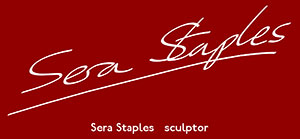 You can keep up to date with my news by following me in the social media links at the bottom of the page.
You can keep up to date with my news by following me in the social media links at the bottom of the page.
December 20th 2013
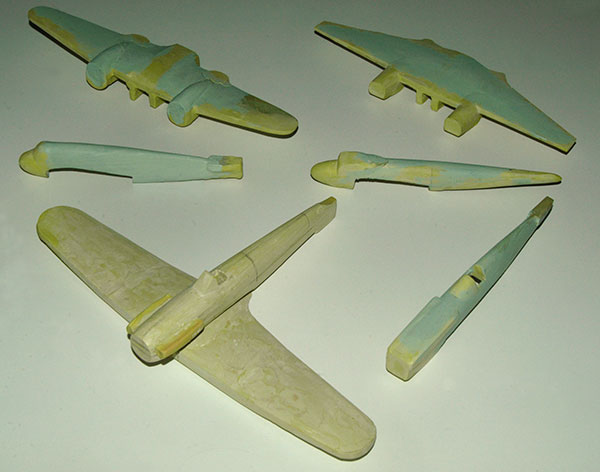
This week we have been getting ready for next year. As I am sure you have worked out it will be the 70th anniversary of ‘Operation Overlord’ the allied invasion of Europe or D-Day. We are marking this by releasing the following aircraft in 1/48 scale Spitfire Mk IXC, Typhoon Mk IB, and Bf109G-6/U2 as well as a Beaufighter TF Mk X in 1/72 scale. Prior to these we will be releasing the Mosquito Mk IX in 1/72 scale. The photo above shows the Beaufighter, Mosquito, Typhoon and Spitfire in early stages of sculpting. As you can imagine it has been a very messy week. The Beaufighter wing and Spitfire fuselage are an example of our generic masters which will allow other variants in the future. Take a closer look at the Beaufighter wing and try and work out what we have planned. Of course all these new aircraft require decals so we are preparing a decal sheet for which we are also choosing lots of interesting new aircraft for future releases.
That just leaves me to wish you all a very Merry Christmas and a Happy New Year.
December 10th 2013
![]()
Just starting to think ahead about next year. What to sculpt and what decals to originate. There may well be a bit of a theme for next year but we will still be producing some exciting new aircraft. I hope to get some new projects started over the Christmas break and will let you know how that goes in the New Year.
November 13th 2013
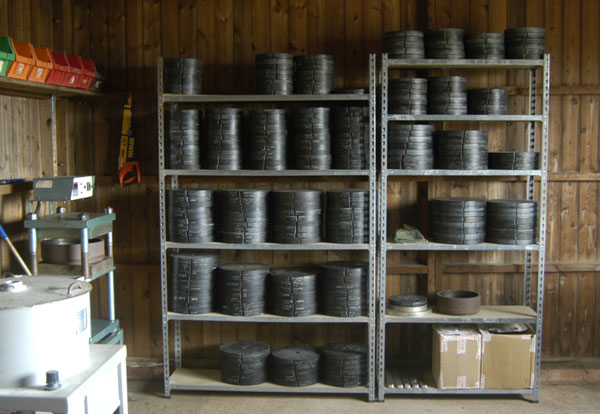
I have just finished a day and a half of casting. I haven’t cast a massive ammount, but the reason it has taken so long is the variety of what I have cast. Each aircraft needs 3 molds and I have cast parts for about 20 different aircraft. The problem is each mold has to get to its operating temperature and although I do use an oven to preheat the molds it still takes time. In the photo you can see our current range of molds aranged into 9 and 12 inch diameter. The 9 inch molds are for small parts and the 12 inch molds are for wings and fuselages.
November 11th 2013
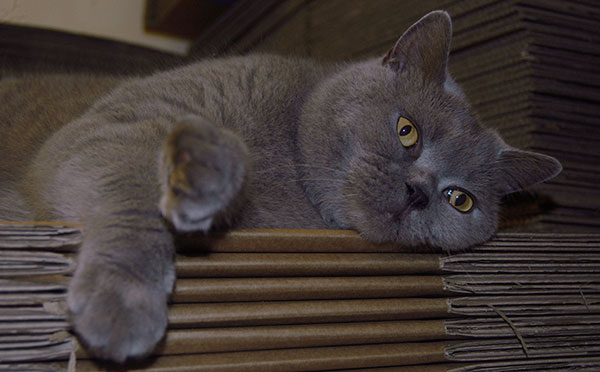
Today has been exhausting! This morning I have been packing aircraft for dispatch and as you can see I have had some help. This is ‘Winston’ our ‘British Blue’ cat. Fortunately he doesn’t like cigars or whisky. Electricians have been here today installing more power sockets, and while the power has been off I have been planning some new releases for next year, more news on that later.
October 16th 2013
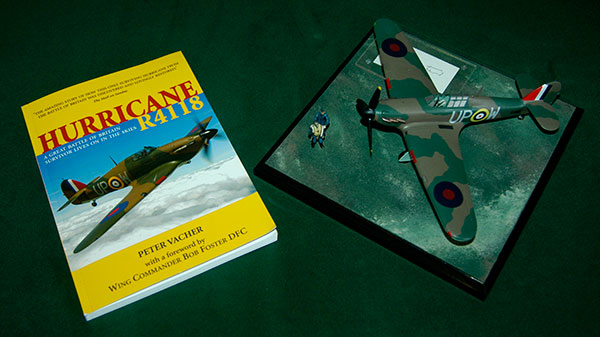
Just received my copy of ‘Hurricane R4118’ which documents in detail the history of R4118 from entering service to its recovery and restoration to flight by Peter Vacher. It is full of photos and well laid out making it an excellent companion for our model, well worth getting.
For further information on R4118 and where to obtain a copy of the book go to www.hurricanedisplay.co.uk
October 4th 2013
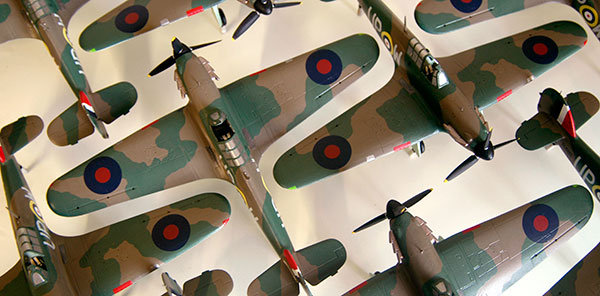
Hurricane Mk I production is going well, orders have been flooding in and I am flat out casting, assembling painting and decaling.
Whilst sculpting the Hurricane I discovered something interesting. From the Hurricane Mk II (series 2) the fuselage was lengthened by 7 inches between the engine and cockpit. This is why some Hurricanes look longer than others. This is made more confusing by late mark Hurricanes at airshows today in Battle of Britain markings. If you look at period photos of Mk Is and later Mks you will see what I mean.
September 11th 2013
Some of our customers may remember we used to sell acrylic dust covers for our aircraft. We have long since stopped selling them but they are still available from the manufacturer Stephensons Plastics Ltd based in Guildford. If you would like an acrylic cover they will need to know the base size (you can find this with the model details on each aircraft page) and internal height you would like your cover.
September 4th 2013
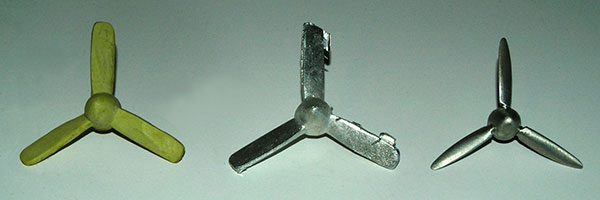
I thought you might like to see the basic principles behind why I sculpt something a particular way. Well here is a Hurricane propellor as an example. The Milliput master is deiliberately oversize in all dimensions allowing it to be used for a wide variety of aircraft. This means that from just one silicone mold I can produce many propellors for different aircraft without having to make new Milliput master and silicone mold every time. The downside to this is that it does take slightly more time and effort to rework the rough metal casting to create the finished master. Something that is allways a trade off but ultimately more efficient. We also do this with wings and fuselages, creating generic Milliput masters for the Spitfire and Bf 109, making further variants quicker to get into production.
September 3rd 2013
The 1/48 scale Hurricane Mk I is finally finished and we are really pleased with the result. It is deffinately a quantum leap in our aircraft sculpting and will take us forward to many more exciting future projects. Incidentally the final weight came in exactly at 750g as predicted! I wish I had the same luck with the lottery.
August 21st 2013
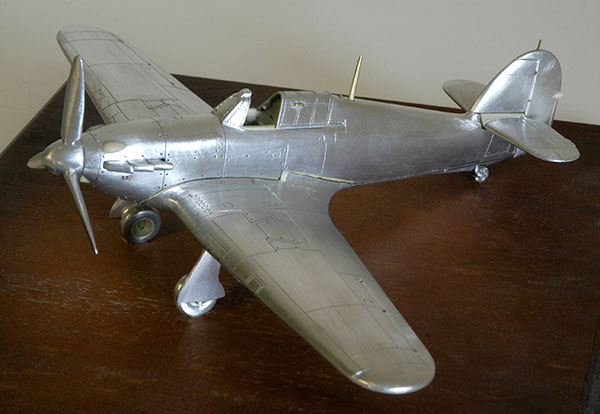
Almost finished on the Hurricane masters. Just a few final details to complete then it’s time for moldmaking. I am really pleased with the cockpit detail which has separate sidewalls, seat, joystick, floor, and pedal assembly. Getting the Hurricane looking ‘right’ has been really difficult but I am very pleased with the result.
August 13th 2013
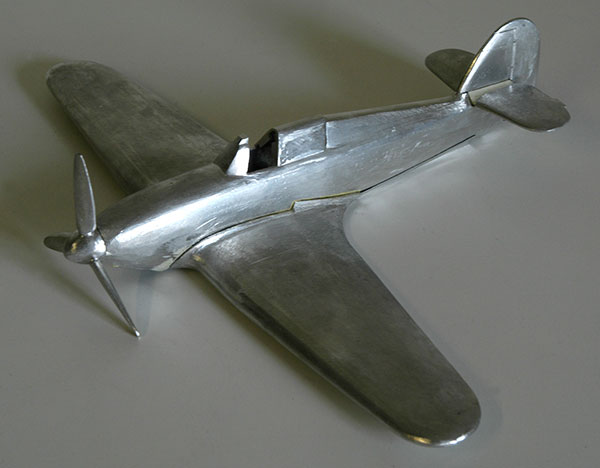
Now I am getting somewhere! A lot of metal has been removed and parts are being resized and fitted together. The Hurricane ‘look’ is really coming through as the complex curves are being created. I am pretty happy with the shape and will start puting on some pannel lines and other detail – this is the part I like because it brings out the personality of the aircraft.
August 6th 2013
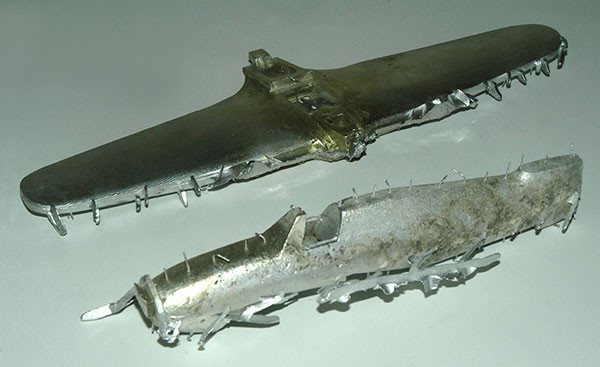
I have just cast the metal masters for the Hurricane and despite their appearance I am really pleased with the quality. Bearing in mind the size and bulk of the castings they have come out really well, especially the wing which was my main concern. Now, where are my files?
August 2nd 2013
We have worked out an approximate completed weight for the Hurricane in readiness for ordering pewter for production. It is expected to weigh in at about 750 grams or 1 lb 10.5 oz. The Hurricane will be one of the heaviest aircraft we have produced and will certainly have presence. The silicone molds are now complete and I can now cast the metal masters. We have incrementally taken on bigger and more challenging aircraft each time learning from previous projects. If all goes well with the Hurricane, and I see no reason why it should not, we will be able to produce some of the larger fighters in 1/48 scale as well as some of the larger twin engined aircraft more effectively in 1/72 scale.
August 1st 2013
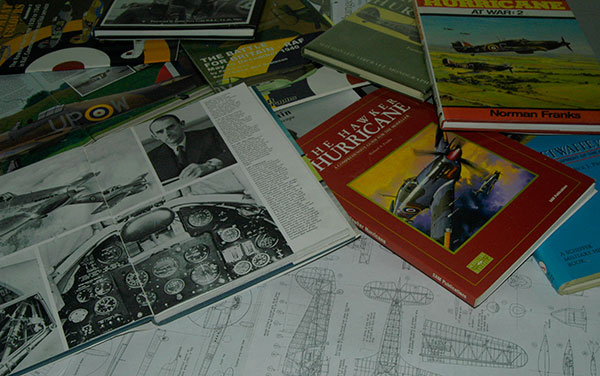
You never can have enough books on aircraft. For us a good library is essential so we can cross reference and ensure that every detail of our aircraft is accurate. This isn’t a problem with an aircraft such as the Hurricane where so much information is available but on more obscure aircarft where none survive it can cause problems.
July 31st 2013
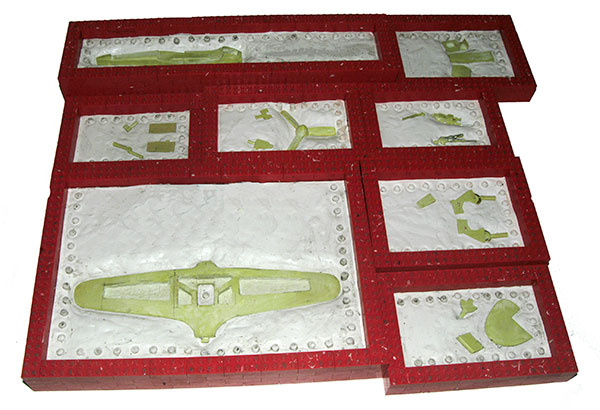
The first half of the silicone molds have been poured and I have just had a Fedex delivery of another 25Kg of silicone so I can now pour the other side. The first half of the molds used nearly 4 Kg of silicone. We normally use just over 3 Kg for a 1/72 aircraft. This Hurricane is going to be a big model.
July 26th 2013
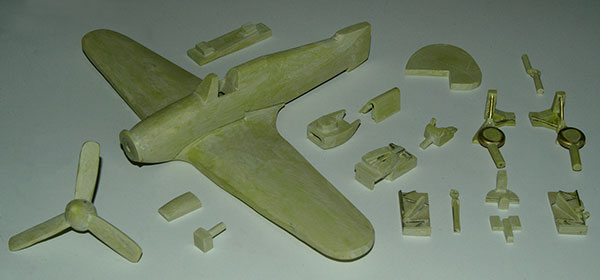
The Milliput stage of the Hurricane is now complete, just the two new figures to sculpt then on to making silicone molds next week to convert the masters into metal. Parts such as the horizontal tail will be cut from a pewter blank. The propellor and vertical tail are ‘generic’ and are provide a basis for other projects.
July 18th 2013
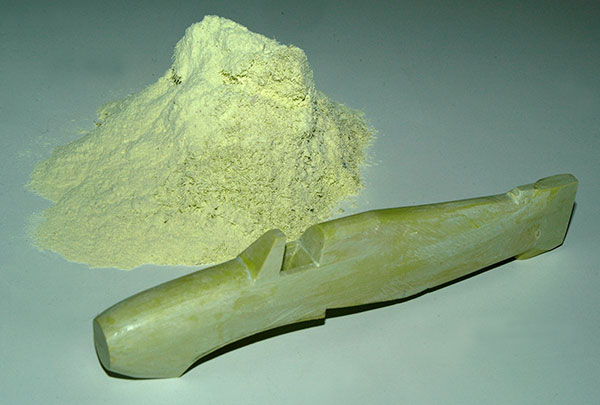
Most of today has been spent working on the Hurricane fuselage. I thought I would keep the removed Milliput to get an idea of how much sanding and grinding I had done. I hollow out the fuselage to reduce the bulk of the casting which means less porosity and a better quality casting. I aim for a wall thicknes of about 3-4 mm. It does make a bit of a mess though.
July 17th 2013
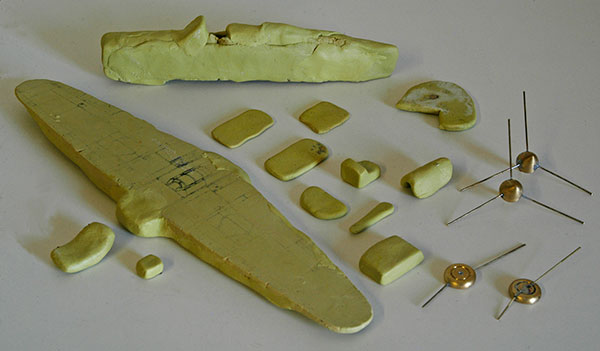
Hurricane sculpting is going well. So far the parts have just been roughly shaped in Milliput ready to be filed down this will be very messy. I then add more Milliput and file down again. At this stage most of the parts are unrecognisable, you might like to try and guess what each piece of Milliput will becom,e their shape and location should give you a clue. The turned brass wheels and spinners form the basis for the undercarriage and propellors and are yet to recieve any Milliput.
July 16th 2013
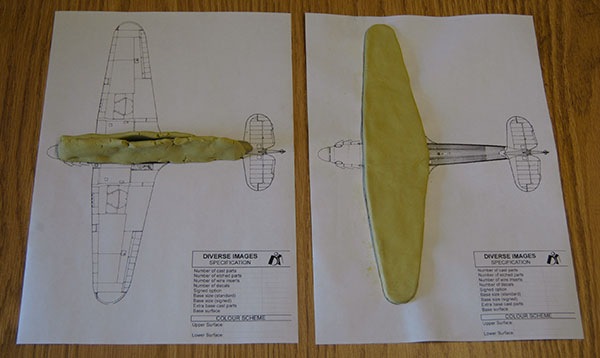
A significant day – the start of Hurricane Mk I sculpting. It may not look much yet but this is what it will look like when it is finished Hurricane Mk I R4118. It is quite surprising that Sydney Camm the designer of the Hurricane also contributed to the design of the Harrier. I cannot think of two more contrasting classic fighters
July 15th 2013
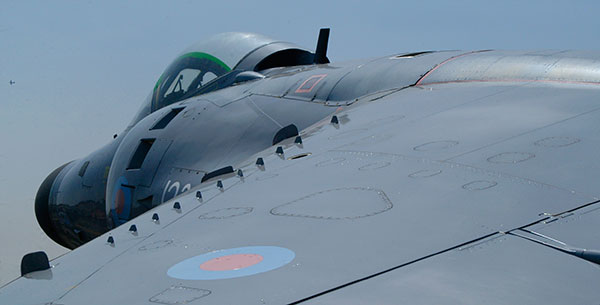
We went to a very hot Yeovilton Air Day on Saturday and had a great time. The Chinook Display Team, XH558, and The Red Arrows all gave stunning displays. I took lots of photos especially in the museum, which I can thoroughly recommend, bought a stack of books and now have lots of ideas for future projects.
June 27th 2013
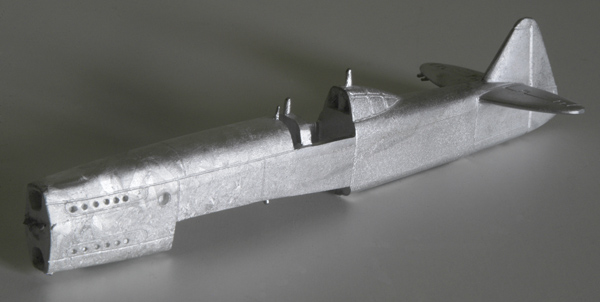
More casting today and thought you might like to see a near perfect casting. This is an MB2 fuselage which we feed the metal in through the nose where the propellor is mounted, you can see the coarse flat end of the metal feed. The short tags sticking out of the fuselage and tail are caused by air vents. The metal at the nose has a crystaline appearance this means the metal is at its maximum temperature before porosity occours and can cause a reject casting. High temperatures are needed to help the metal flow into the fine detail, this is allways a delicate balance. The part line between the two halves of the mold which runs from the feed all the way around the casting and is in line with the horizontal tail is almost invisible which reduces the ammount of cleaning up. This is what we allways aim to achieve to produce a top quality aircraft.
May 28th 2013
The Martin Baker MB2 and Seafire Mk XV are now in production. Our next release will be the Hawker Hurricane Mk I UP-W R4118 signed by Wg Cdr Bob Foster as flown by him during the ‘Battle of Britain’. R4118 has recently been restored to flying condition and can be seen at UK airshows. This will be in 1/48 scale and make the perfect accompaniment for the 1/48 Bf109E-4/B and Spitfire Mk I.
May 20th 2013
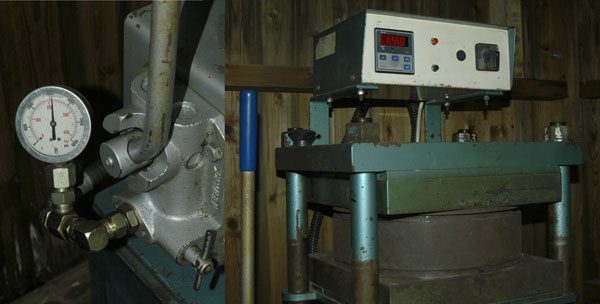
Mouldmaking today! One 12 inch mould with the MB2 and Seafire MK XV wings, followed by a second 12 inch mould with their respective fuselages. The metal masters are sandwiched between two discs of rubber and placed in the ‘mould can’ which is heated to 150 degees C and subject to 3000 Psi (17.12 tonnes) of pressure to vulcanise the rubber. The moulds are ‘cooked’ for about an hour and a half before being taken out and the metal feeds cut by hand. It’s a bit like making a Victoria sponge…but less fattening.
May 17th 2013
Martin Baker MB2 sculpting is complete and it looks stunning, just the accompanying Seafire Mk XV to go which is proving more complex than originally thought. The first 384 production Seafire Mk Xvs were fitted with an ‘A frame’ arrestor hook which dropped down from the fuselage, all subsequent Seafires were fitted with the ‘stinger’ type which our version will have. All Seafire Mk XVs had the 4 blade propellor rather than the more tractable 5 blade propellor fitted to the Spitfire XIV, XIX, and XVIII which is a surprise.
May 10th 2013
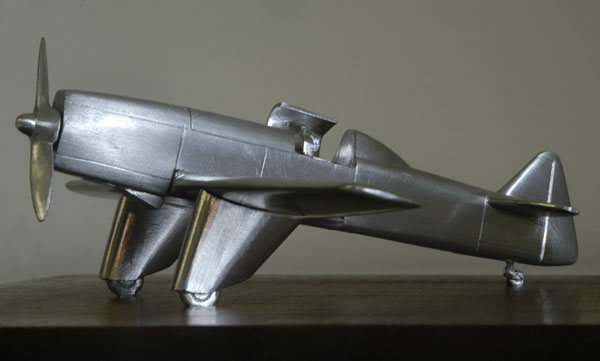
Martin Baker MB 2 sculpting is going well. The MB 2 is a really elegant ‘Art deco’ style of aircraft and, typically of Martin Baker radically different to anything else of the period. I hope to finish the MB 2 and the Seafire Mk XV next week, they are certainly going to be a contrasting pair of aircraft.
April 15th 2013
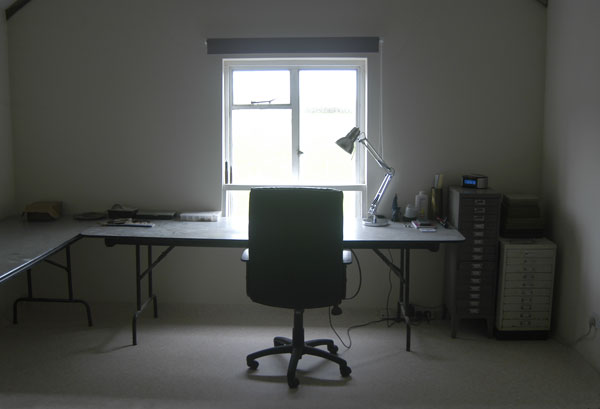
I have finally got my new office set up, and I am itching to get back to sculpting. Our new casting room is now up and running and I just have to unpack all our aviation books. I have ordered 40 feet of shelving for the books and hope it will be enough – well, you never can have enough aircraft books can you?
Our new phone number is 01884 839201.
March 25th 2013 IMPORTANT NOTICE
We will be moving premises on the 26th of March and will be closed until Monday the 15th of April. Our new address is as follows.
Diverse Images Ltd., East Hayes, Growen Lane, Cullompton, Devon EX15 1NH.
March 21st 2013
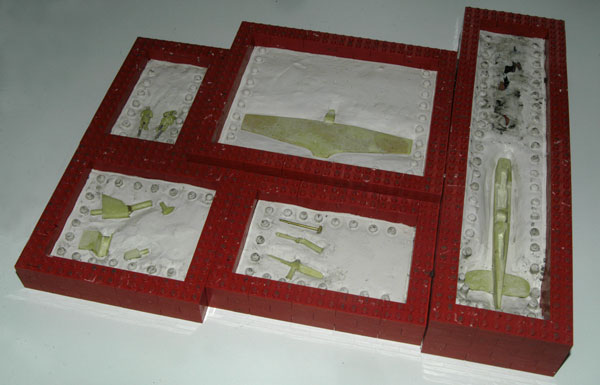
Last weekend I poured the first half of the MB2 silicone moulds. This will be a very unusual aircraft but I think will have a great deal of presence. The MB2 will be painted in a colour called ‘NIVO’ which is a very dark olive green. The abreviation NIVO comes from ‘Night Invisible Varnish Orfordness’ and was used on RFC/RAF aircraft of World War I. The MB2 is probably the last example of NIVO being used on an aircraft before World War II.
March 5th 2013
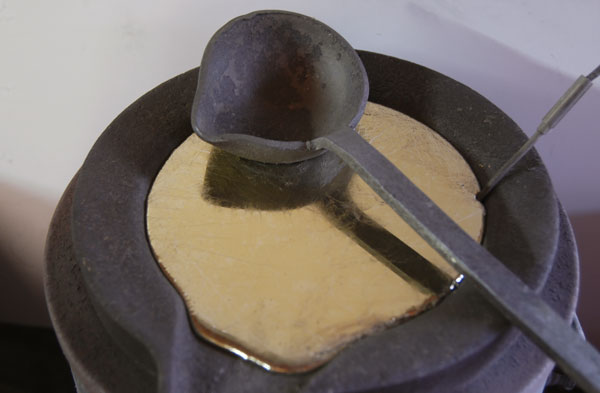
Lots of casting today. We are often asked what the molten pewter looks like well here’s a photo. It is silver in colour and when molten looks like Mercury. When molten it can take on other hues, here it has a yellow tinge this can turn to a purple if it gets too hot. We use an iron ladle to pour the metal. The rod to the right is the temperature probe which controls our casting temperature.
February 26th 2013
As busy weekend of MB2 sculpting therapy. Of course the image from 5-2-13 was of the MB2 which many of you guessed. The Milliput masters for the aircraft are now finished. I just have to compltete the masters for the two new figures – a pilot and technician, then it is time to make the silicone moulds.
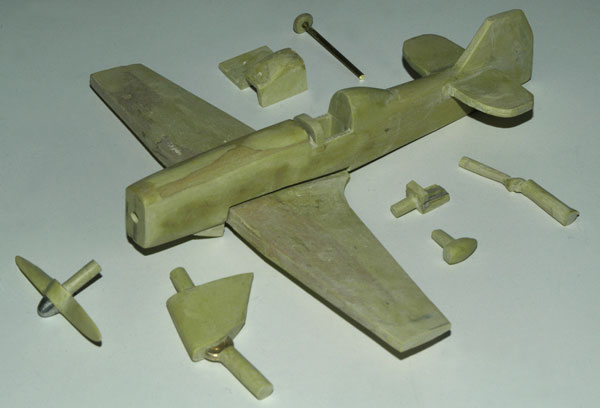
February 5th 2013
Production is going well with the new 263 Sqn Westland Whirlwind Mk I and 1/48 scale Spitfire Mk I of Sqn Ldr Roger Bushell both in limited editions of 25 only. The Whirlwind is released to compliment our previous 137 Sqn Whirlwind Mk I (the othe Whirlwind squadron) and ‘Big X’s’ Spitfire is signed by Geoffrey Wellum.
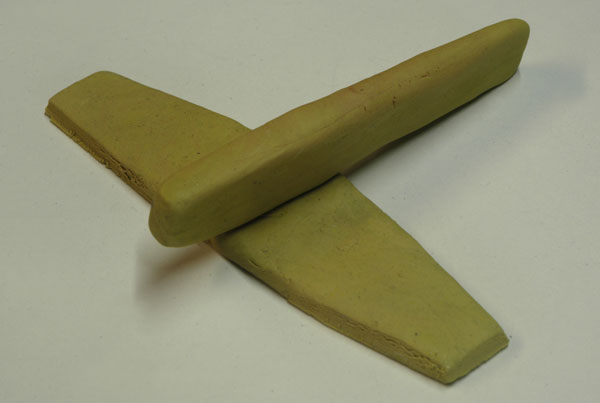
I had a spare few hours this weekend and decided break out the Milliput and to do some sculpting, can you tell what it is yet?
January 16th 2013
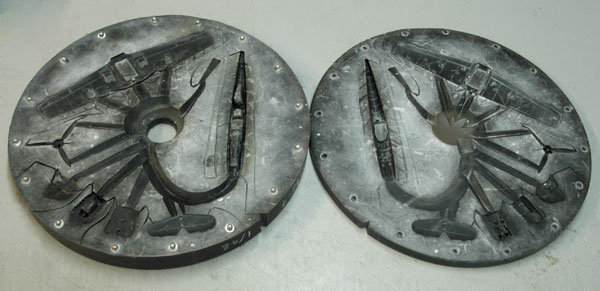
Let me start 2013 by wishing everyone a very happy 2013 and I hope we can build on last years releases with some more exciting aircraft.
I thought I would post a picture of one of the Bf109 production molds. It is basically two discs of rubber which take up the impression of the metal masters, the upper half on the left, lower on the right. When assembled the mold is spun on a centrifuge, and pewter is poured through the hole in the centre of the upper half of the mold. I have cut channels in the mold to carry the pewter to the mold cavities, and small vents take out any air to aid casting. Metal temperature, spin speed, and how I pour the metal all contribute to a successful casting.

